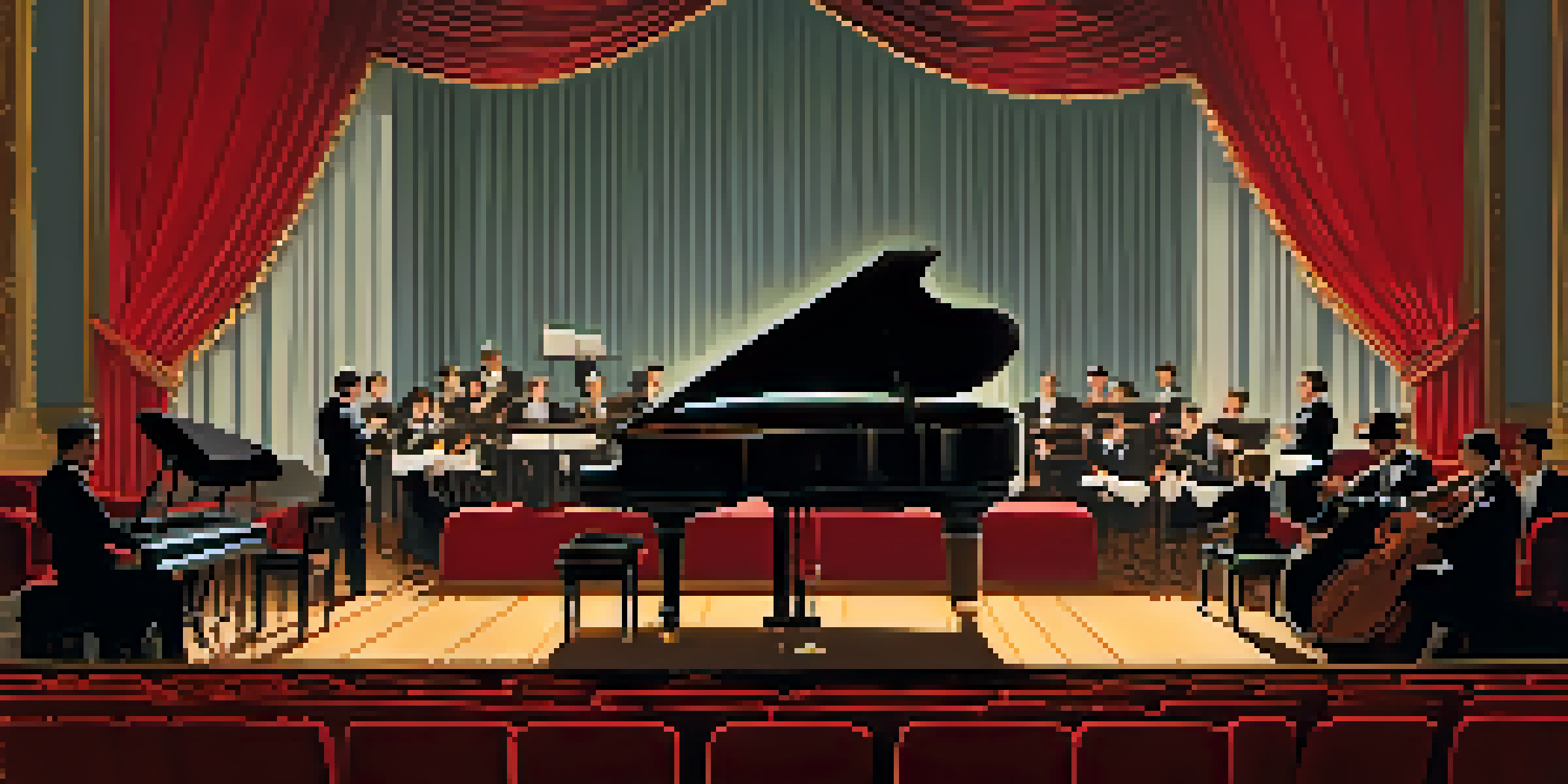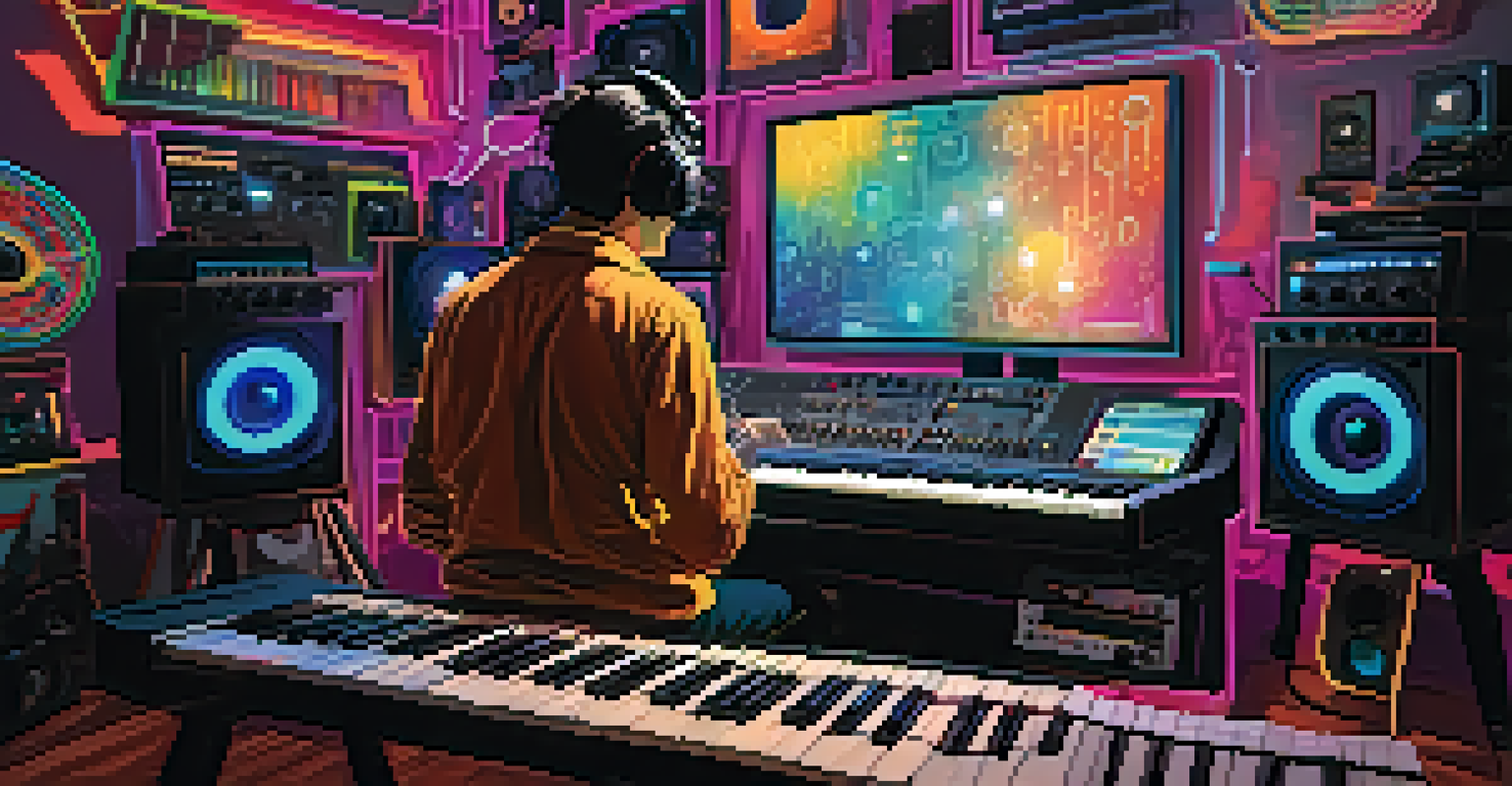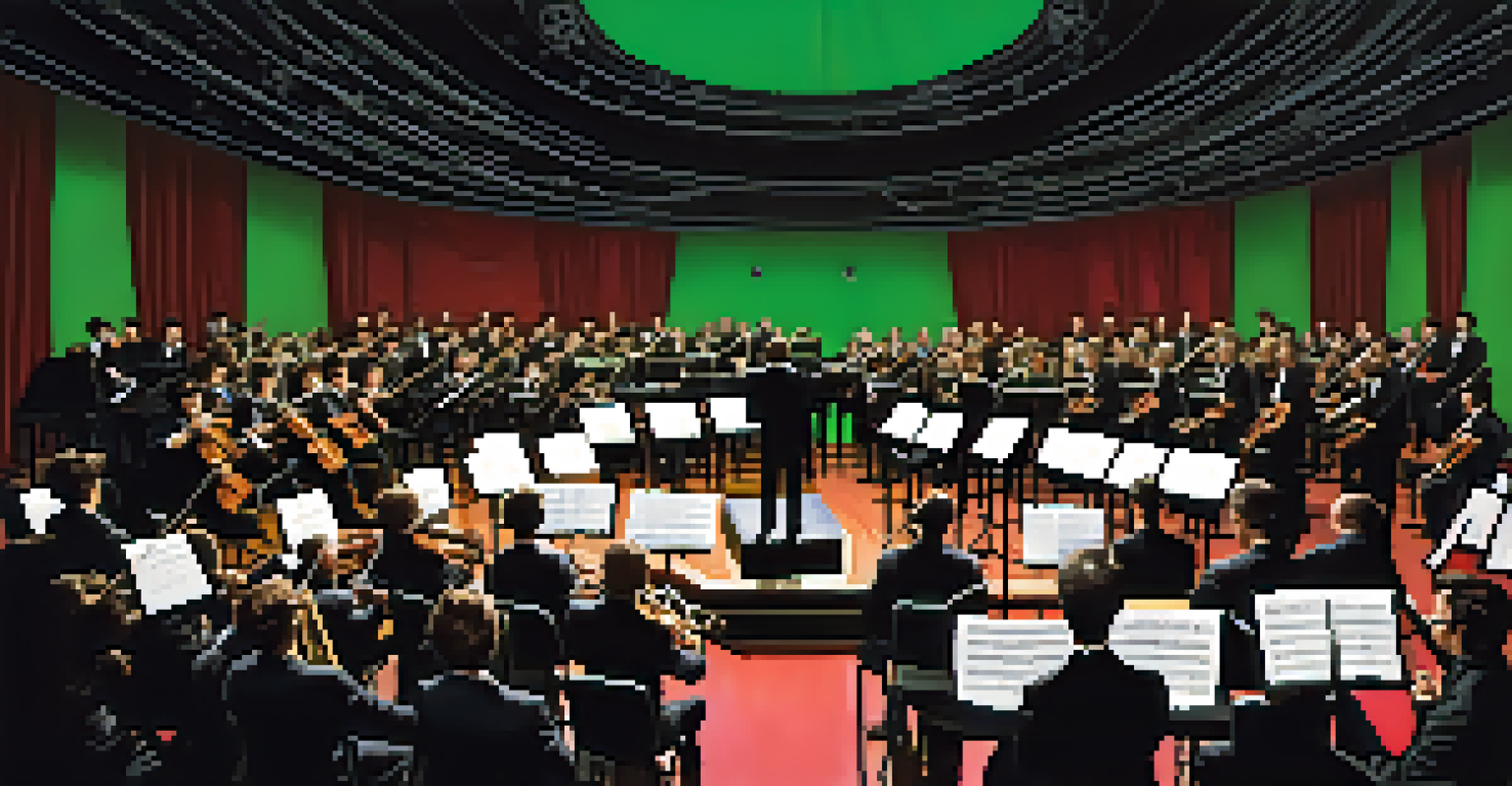The Evolution of Film Music: From Silent Films to Modern Scores

The Birth of Film Music in Silent Cinema
In the early days of cinema, films were silent, relying heavily on visual storytelling. However, to enhance the experience, live musicians often performed in theaters, providing an auditory backdrop to the unfolding drama. This practice laid the groundwork for the integral role that music would come to play in film.
Music can change the world because it can change people.
The music used during silent films varied widely, from classical compositions to original scores tailored for individual films. Imagine a pianist improvising melodies that matched the emotions of the characters on screen; this was a common scene in theaters of the time.
As filmmakers began to realize the power of music to evoke emotions, the need for more structured scores became apparent. This transition marked the beginning of a significant evolution in the relationship between film and music.
The Rise of the Sound Era and Film Scores
The introduction of synchronized sound in the late 1920s transformed the landscape of film music. With the release of 'The Jazz Singer' in 1927, audiences were captivated not just by the visuals but also by the sounds accompanying them, including songs and dialogue.

This new era allowed composers to craft scores that complemented the narrative rather than just filling the gaps. The music became a character in its own right, helping to shape the viewer's emotional response to the story.
Music Evolved with Film Technology
The transition from silent films to the sound era marked a significant shift in how music complemented storytelling, enhancing emotional engagement.
As sound technology advanced, filmmakers began to utilize orchestras and larger ensembles, giving rise to a richer, more complex sound. Iconic scores from this time, like those of Max Steiner and Erich Wolfgang Korngold, set the stage for future film music.
Golden Age Composers and Their Impact
The 1930s to the 1950s is often referred to as the Golden Age of Hollywood, a time when film music flourished under the guidance of brilliant composers. Figures like Bernard Herrmann and Dmitri Tiomkin emerged, creating memorable themes that are still celebrated today.
Without music, life would be a mistake.
Herrmann's score for 'Psycho' revolutionized horror film music with its haunting strings, while Tiomkin's work in 'High Noon' helped to popularize the use of songs within scores. These composers understood how to manipulate music to create tension, excitement, and emotion.
Their innovative approaches not only enhanced the films they worked on but also influenced generations of composers that followed. The legacy of their work is evident in modern film scores, which continue to draw inspiration from this rich period.
The Advent of Electronic Music in Film
As technology progressed, the introduction of electronic music in the 1960s opened new doors for film composers. Synthesizers and electronic instruments began to find their way into scores, allowing for entirely new soundscapes that were previously unimaginable.
Composers like Wendy Carlos, with her groundbreaking score for 'A Clockwork Orange,' showcased the potential of electronic sounds in enhancing the cinematic experience. This shift not only changed how music was created but also how it was perceived by audiences.
Golden Age Composers Influenced Cinema
Composers like Bernard Herrmann and Dmitri Tiomkin created iconic scores that not only defined their films but also set a standard for future generations.
The integration of electronic elements paved the way for a more experimental approach to film music, influencing genres from sci-fi to horror. As a result, film scores began to evolve into a blend of traditional orchestration and modern technology.
The Influence of World Music on Film Scores
In recent decades, filmmakers have increasingly turned to world music to enrich their scores. This global influence has brought a diverse array of sounds and styles into the mainstream, reflecting the multiculturalism of contemporary cinema.
Composers like Gustavo Santaolalla and Tan Dun have seamlessly blended traditional instruments and techniques from their cultures into Hollywood films, creating scores that resonate on a deeper level. For instance, Santaolalla's work on 'Brokeback Mountain' beautifully intertwines folk elements with orchestral music.
This incorporation of world music not only adds authenticity but also allows for storytelling that transcends cultural boundaries. It's a reminder of how music can unite us all, regardless of our background.
The Role of Music in Modern Blockbusters
In today's film industry, music plays a pivotal role in defining the success of blockbuster films. Iconic franchises like 'Star Wars' and the Marvel Cinematic Universe have scores that are instantly recognizable, contributing to their cultural impact.
Composers such as John Williams and Hans Zimmer have mastered the art of creating themes that become synonymous with the films they accompany. Williams' 'Imperial March' or Zimmer's 'Inception' score exemplify how music can heighten the stakes and emotions of a scene.
World Music Enriches Modern Scores
The incorporation of world music into film scores reflects cultural diversity and enhances the authenticity of storytelling in contemporary cinema.
Moreover, the modern trend of using trailers with powerful scores has further cemented the importance of music in marketing films. A well-crafted score can evoke anticipation, making viewers eager to experience the film.
The Future of Film Music: Trends and Innovations
Looking ahead, the future of film music promises to be exciting and innovative, shaped by advancements in technology and shifting audience preferences. Streaming platforms have changed the way films are consumed, and this has implications for how music is integrated into storytelling.
Composers are now exploring new methods of collaboration, often working with tech companies to create interactive soundscapes that engage viewers in unique ways. This trend could lead to more personalized experiences, where the music changes based on audience reactions.

As new genres and styles continue to emerge, the evolution of film music is bound to reflect the ever-changing cultural landscape. The journey of film music is far from over, and its future is just as vital as its past.